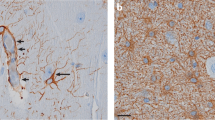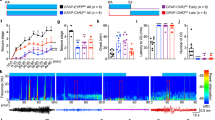Abstract
Reactive astrocytes have been proposed to become incompetent bystanders in epilepsy as a result of cellular changes rendering them unable to perform important housekeeping functions. Indeed, successful surgical treatment of mesiotemporal lobe epilepsy hinges on the removal of the glial scar. New research now extends the role of astrocytes, suggesting that they may drive the disease process by impairing the inhibitory action of neuronal GABA receptors. Here we discuss studies that include hyperexcitability resulting from impaired supply of astrocytic glutamine for neuronal GABA synthesis, and epilepsy resulting from genetically induced astrogliosis or malignant transformation, both of which render the inhibitory neurotransmitter GABA excitatory. In these examples, glial cells alter the expression or function of neuronal proteins involved in excitability. Although epilepsy has traditionally been thought of as a disease caused by changes in neuronal properties exclusively, these new findings challenge us to consider the contribution of glial cells as drivers of epileptogenesis in acquired epilepsies.
This is a preview of subscription content, access via your institution
Access options
Subscribe to this journal
Receive 12 print issues and online access
$209.00 per year
only $17.42 per issue
Buy this article
- Purchase on Springer Link
- Instant access to full article PDF
Prices may be subject to local taxes which are calculated during checkout

Similar content being viewed by others
References
Kuffler, S.W. & Potter, D.D. Glia in the leech central nervous system: physiological properties and neuron-glia relationship. J. Neurophysiol. 27, 290–320 (1964).
Butt, A. & Verkhratsky, A. Neuroglia: definition, classification, evolution, numbers, development. in Neuroglia (eds. Kettenmann, H. & Ransom, B.R.) 601 (Oxford University Press, 2013).
Olsen, M.L. & Sontheimer, H. Functional implications for Kir4.1 channels in glial biology: from K+ buffering to cell differentiation. J. Neurochem. 107, 589–601 (2008).
Coulter, D.A. & Steinhäuser, C. Role of astrocytes in epilepsy. Cold Spring Harb. Perspect. Med. 5, a022434 (2015).
Kofuji, P. & Newman, E.A. Potassium buffering in the central nervous system. Neuroscience 129, 1045–1056 (2004).
Holmseth, S. et al. The concentrations and distributions of three C-terminal variants of the GLT1 (EAAT2; slc1a2) glutamate transporter protein in rat brain tissue suggest differential regulation. Neuroscience 162, 1055–1071 (2009).
Marcaggi, P. & Attwell, D. Role of glial amino acid transporters in synaptic transmission and brain energetics. Glia 47, 217–225 (2004).
Maragakis, N.J. & Rothstein, J.D. Mechanisms of disease: astrocytes in neurodegenerative disease. Nat. Clin. Pract. Neurol. 2, 679–689 (2006).
Sofroniew, M.V. Molecular dissection of reactive astrogliosis and glial scar formation. Trends Neurosci. 32, 638–647 (2009).
Robel, S., Berninger, B. & Götz, M. The stem cell potential of glia: lessons from reactive gliosis. Nat. Rev. Neurosci. 12, 88–104 (2011).
Silver, D.J. & Steindler, D.A. Common astrocytic programs during brain development, injury and cancer. Trends Neurosci. 32, 303–311 (2009).
During, M.J. & Spencer, D.D. Extracellular hippocampal glutamate and spontaneous seizure in the conscious human brain. Lancet 341, 1607–1610 (1993).
Eid, T. et al. Loss of glutamine synthetase in the human epileptogenic hippocampus: possible mechanism for raised extracellular glutamate in mesial temporal lobe epilepsy. Lancet 363, 28–37 (2004).
Marcus, H.J., Carpenter, K.L., Price, S.J. & Hutchinson, P.J. In vivo assessment of high-grade glioma biochemistry using microdialysis: a study of energy-related molecules, growth factors and cytokines. J. Neurooncol. 97, 11–23 (2010).
Steinhäuser, C., Grunnet, M. & Carmignoto, G. Crucial role of astrocytes in temporal lobe epilepsy. Neuroscience 10.1016/j.neuroscience.2014.12.047 (13 January 2015).
Ortinski, P.I. et al. Selective induction of astrocytic gliosis generates deficits in neuronal inhibition. Nat. Neurosci. 13, 584–591 (2010).
Robel, S. et al. Reactive astrogliosis causes the development of spontaneous seizures. J. Neurosci. 35, 3330–3345 (2015).
Buckingham, S.C. et al. Glutamate release by primary brain tumors induces epileptic activity. Nat. Med. 17, 1269–1274 (2011).
Pallud, J. et al. Cortical GABAergic excitation contributes to epileptic activities around human glioma. Sci. Transl. Med. 6, 244ra89 (2014).
Campbell, S.L. et al. GABAergic disinhibition and impaired KCC2 cotransporter activity underlie tumor-associated epilepsy. Glia 63, 23–36 (2015).
Hertz, L. Functional interactions between neurons and astrocytes I. Turnover and metabolism of putative amino acid transmitters. Prog. Neurobiol. 13, 277–323 (1979).
Liang, S.L., Carlson, G.C. & Coulter, D.A. Dynamic regulation of synaptic GABA release by the glutamate-glutamine cycle in hippocampal area CA1. J. Neurosci. 26, 8537–8548 (2006).
Kam, K. & Nicoll, R. Excitatory synaptic transmission persists independently of the glutamate-glutamine cycle. J. Neurosci. 27, 9192–9200 (2007).
Eid, T., Tu, N., Lee, T.S. & Lai, J.C. Regulation of astrocyte glutamine synthetase in epilepsy. Neurochem. Int. 63, 670–681 (2013).
Robel, S. et al. Conditional deletion of beta1-integrin in astroglia causes partial reactive gliosis. Glia 57, 1630–1647 (2009).
Brakebusch, C. & Fässler, R. beta 1 integrin function in vivo: adhesion, migration and more. Cancer Metastasis Rev. 24, 403–411 (2005).
Takada, Y., Ye, X. & Simon, S. The integrins. Genome Biol. 8, 215 (2007).
Ben-Ari, Y., Khalilov, I., Kahle, K.T. & Cherubini, E. The GABA excitatory/inhibitory shift in brain maturation and neurological disorders. Neuroscientist 18, 467–486 (2012).
Kahle, K.T. et al. Modulation of neuronal activity by phosphorylation of the K-Cl cotransporter KCC2. Trends Neurosci. 36, 726–737 (2013).
Ferrini, F. et al. Morphine hyperalgesia gated through microglia-mediated disruption of neuronal Cl− homeostasis. Nat. Neurosci. 16, 183–192 (2013).
Gagnon, M. et al. Chloride extrusion enhancers as novel therapeutics for neurological diseases. Nat. Med. 19, 1524–1528 (2013).
Zong, H., Verhaak, R.G. & Canoll, P. The cellular origin for malignant glioma and prospects for clinical advancements. Expert Rev. Mol. Diagn. 12, 383–394 (2012).
Louis, D.N. et al. The 2007 WHO classification of tumours of the central nervous system. Acta Neuropathol. 114, 97–109 (2007).
Brismar, T. Physiology of transformed glial cells. Glia 15, 231–243 (1995).
Rivera-Zengotita, M. & Yachnis, A.T. Gliosis versus glioma?: don't grade until you know. Adv. Anat. Pathol. 19, 239–249 (2012).
Yang, H.Y., Lieska, N., Shao, D., Kriho, V. & Pappas, G.D. Proteins of the intermediate filament cytoskeleton as markers for astrocytes and human astrocytomas. Mol. Chem. Neuropath. 21, 155–176 (1994).
Yang, C., Rahimpour, S., Yu, A.C., Lonser, R.R. & Zhuang, Z. Regulation and dysregulation of astrocyte activation and implications in tumor formation. Cell. Mol. Life Sci. 70, 4201–4211 (2013).
Takano, T. et al. Glutamate release promotes growth of malignant gliomas. Nat. Med. 7, 1010–1015 (2001).
Robert, S.M. et al. SLC7A11 expression is associated with seizures and predicts poor survival in patients with malignant glioma. Sci. Transl. Med. 7, 289ra86 (2015).
Ye, Z.C. & Sontheimer, H. Glioma cells release excitotoxic concentrations of glutamate. Cancer Res. 59, 4383–4391 (1999).
Perez, V.J., Olney, J.W. & Robin, S.J. Glutamate accumulation in infant mouse hypothalamus: influence of temperature. Brain Res. 59, 181–189 (1973).
Buckingham, S.C. & Robel, S. Glutamate and tumor-associated epilepsy: glial cell dysfunction in the peritumoral environment. Neurochem. Int. 63, 696–701 (2013).
Di Angelantonio, S. et al. A role for intracellular zinc in glioma alteration of neuronal chloride equilibrium. Cell Death Dis. 5, e1501 (2014).
Clasadonte, J., Dong, J., Hines, D.J. & Haydon, P.G. Astrocyte control of synaptic NMDA receptors contributes to the progressive development of temporal lobe epilepsy. Proc. Natl. Acad. Sci. USA 110, 17540–17545 (2013).
Sloan, S.A. & Barres, B.A. Looks can be deceiving: reconsidering the evidence for gliotransmission. Neuron 84, 1112–1115 (2014).
De Pittà, M., Brunel, N. & Volterra, A. Astrocytes: orchestrating synaptic plasticity? Neuroscience 10.1016/j.neuroscience.2015.04.001 (8 April 2015).
Perea, G., Sur, M. & Araque, A. Neuron-glia networks: integral gear of brain function. Front. Cell. Neurosci. 8, 378 (2014).
Agulhon, C. et al. Calcium signaling and gliotransmission in normal versus reactive astrocytes. Front. Pharmacol. 3, 139 (2012).
Gibbons, M.B., Smeal, R.M., Takahashi, D.K., Vargas, J.R. & Wilcox, K.S. Contributions of astrocytes to epileptogenesis following status epilepticus: opportunities for preventive therapy? Neurochem. Int. 63, 660–669 (2013).
Fujita, T. et al. Neuronal transgene expression in dominant-negative SNARE mice. J. Neurosci. 34, 16594–16604 (2014).
Tian, G.F. et al. An astrocytic basis of epilepsy. Nat. Med. 11, 973–981 (2005).
Lee, H.H., Deeb, T.Z., Walker, J.A., Davies, P.A. & Moss, S.J. NMDA receptor activity downregulates KCC2 resulting in depolarizing GABAA receptor-mediated currents. Nat. Neurosci. 14, 736–743 (2011).
Busch, S.A. & Silver, J. The role of extracellular matrix in CNS regeneration. Curr. Opin. Neurobiol. 17, 120–127 (2007).
Soleman, S., Filippov, M.A., Dityatev, A. & Fawcett, J.W. Targeting the neural extracellular matrix in neurological disorders. Neuroscience 253, 194–213 (2013).
Dityatev, A. et al. Activity-dependent formation and functions of chondroitin sulfate-rich extracellular matrix of perineuronal nets. Dev. Neurobiol. 67, 570–588 (2007).
Glykys, J. et al. Local impermeant anions establish the neuronal chloride concentration. Science 343, 670–675 (2014).
Glykys, J. et al. Response to comments on “Local impermeant anions establish the neuronal chloride concentration”. Science 345, 1130 (2014).
Luhmann, H.J., Kirischuk, S. & Kilb, W. Comment on “Local impermeant anions establish the neuronal chloride concentration”. Science 345, 1130 (2014).
Voipio, J. et al. Comment on “Local impermeant anions establish the neuronal chloride concentration”. Science 345, 1130 (2014).
Dityatev, A. & Fellin, T. Extracellular matrix in plasticity and epileptogenesis. Neuron Glia Biol. 4, 235–247 (2008).
Gaudet, A.D. & Popovich, P.G. Extracellular matrix regulation of inflammation in the healthy and injured spinal cord. Exp. Neurol. 258, 24–34 (2014).
Carmichael, S.T. et al. Growth-associated gene expression after stroke: evidence for a growth-promoting region in peri-infarct cortex. Exp. Neurol. 193, 291–311 (2005).
Roycik, M.D., Myers, J.S., Newcomer, R.G. & Sang, Q.X. Matrix metalloproteinase inhibition in atherosclerosis and stroke. Curr. Mol. Med. 13, 1299–1313 (2013).
Vasilyev, D.V. & Barish, M.E. Regulation of an inactivating potassium current (IA) by the extracellular matrix protein vitronectin in embryonic mouse hippocampal neurones. J. Physiol. (Lond.) 547, 859–871 (2003).
Vasilyev, D.V. & Barish, M.E. Regulation of the hyperpolarization-activated cationic current Ih in mouse hippocampal pyramidal neurones by vitronectin, a component of extracellular matrix. J. Physiol. (Lond.) 560, 659–675 (2004).
Uhm, J.H., Dooley, N.P., Kyritsis, A.P., Rao, J.S. & Gladson, C.L. Vitronectin, a glioma-derived extracellular matrix protein, protects tumor cells from apoptotic death. Clin. Cancer Res. 5, 1587–1594 (1999).
Gladson, C.L., Wilcox, J.N., Sanders, L., Gillespie, G.Y. & Cheresh, D.A. Cerebral microenvironment influences expression of the vitronectin gene in astrocytic tumors. J. Cell Sci. 108, 947–956 (1995).
Gladson, C.L. & Cheresh, D.A. Glioblastoma expression of vitronectin and the alpha v beta 3 integrin. Adhesion mechanism for transformed glial cells. J. Clin. Invest. 88, 1924–1932 (1991).
Binder, D.K., Nagelhus, E.A. & Ottersen, O.P. Aquaporin-4 and epilepsy. Glia 60, 1203–1214 (2012).
Seifert, G., Carmignoto, G. & Steinhäuser, C. Astrocyte dysfunction in epilepsy. Brain Res. Rev. 63, 212–221 (2010).
Huberfeld, G., Blauwblomme, T. & Miles, R. Hippocampus and epilepsy: findings from human tissues. Rev. Neurol. (Paris) 171, 236–251 (2015).
MacKenzie, G. & Maguire, J. Chronic stress shifts the GABA reversal potential in the hippocampus and increases seizure susceptibility. Epilepsy Res. 109, 13–27 (2015).
Löscher, W., Puskarjov, M. & Kaila, K. Cation-chloride cotransporters NKCC1 and KCC2 as potential targets for novel antiepileptic and antiepileptogenic treatments. Neuropharmacology 69, 62–74 (2013).
Muthukumar, A.K., Stork, T. & Freeman, M.R. Activity-dependent regulation of astrocyte GAT levels during synaptogenesis. Nat. Neurosci. 17, 1340–1350 (2014).
Schousboe, A., Madsen, K.K., Barker-Haliski, M.L. & White, H.S. The GABA synapse as a target for antiepileptic drugs: a historical overview focused on GABA transporters. Neurochem. Res. 39, 1980–1987 (2014).
Acknowledgements
This work was supported by grants from the US National Institutes of Health (RO1NS052634, RO1NS082851, RO1NS036692) and the American Brain Tumor Association.
Author information
Authors and Affiliations
Corresponding author
Ethics declarations
Competing interests
The authors declare no competing financial interests.
Rights and permissions
About this article
Cite this article
Robel, S., Sontheimer, H. Glia as drivers of abnormal neuronal activity. Nat Neurosci 19, 28–33 (2016). https://doi.org/10.1038/nn.4184
Received:
Accepted:
Published:
Issue Date:
DOI: https://doi.org/10.1038/nn.4184
This article is cited by
-
Now We Can Tame the Wild West of Controlling Astrocytes for Treating Neocortical Epilepsy
Neuroscience Bulletin (2023)
-
Activated astrocytes attenuate neocortical seizures in rodent models through driving Na+-K+-ATPase
Nature Communications (2022)
-
The metabolic basis of epilepsy
Nature Reviews Neurology (2022)
-
MicroRNAs as regulators of brain function and targets for treatment of epilepsy
Nature Reviews Neurology (2020)
-
TRPV1 translocated to astrocytic membrane to promote migration and inflammatory infiltration thus promotes epilepsy after hypoxic ischemia in immature brain
Journal of Neuroinflammation (2019)



